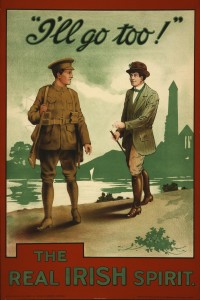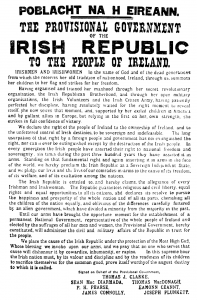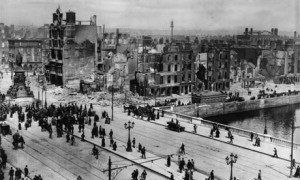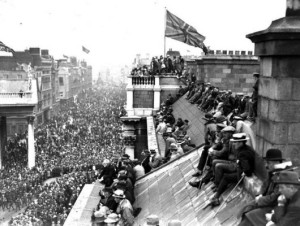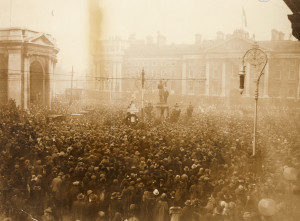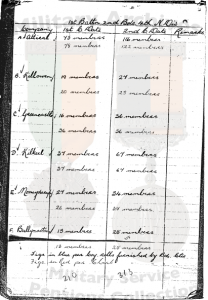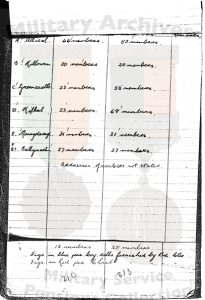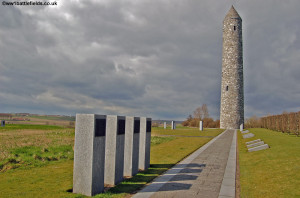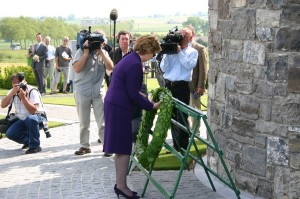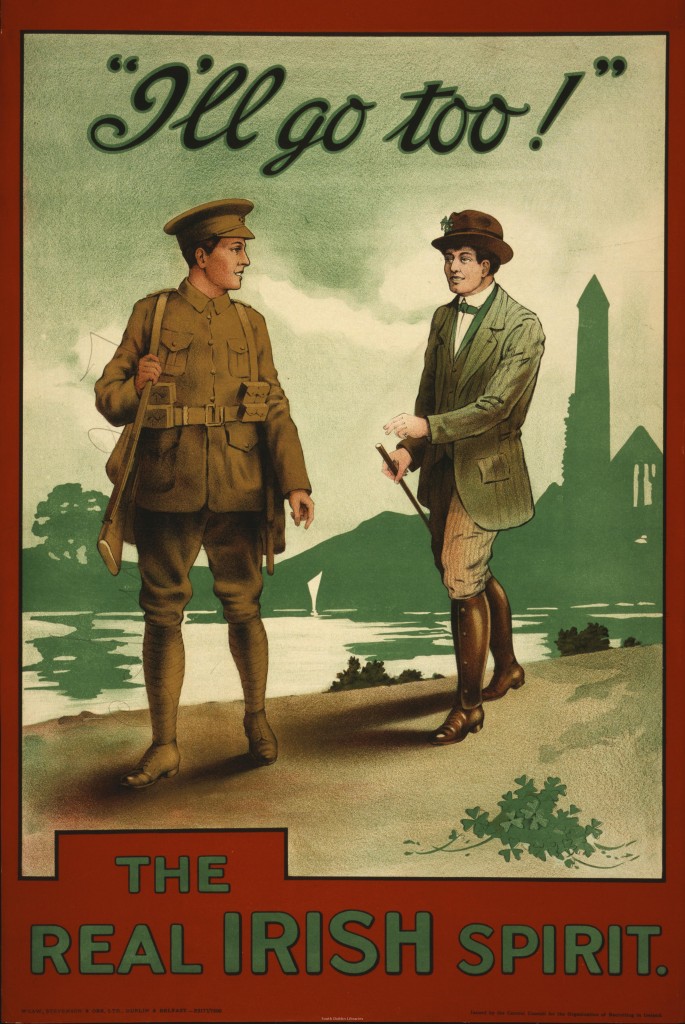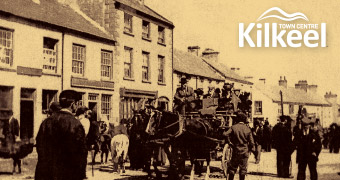Over 200,000 Irishmen joined the war effort even though conscription was not enforced. These men were sent to the fields of France and the beaches of Turkey. While these men were off fighting however, dramatic events were unfolding on Irish soil which would change the way the Great War was remembered in Ireland.
Irish recruitment poster
Irish Soldiers and the Easter Rising
In prelude to the Easter Rising, most people in Ireland were in no mood for rebellion. Irish mothers in Dublin were grieving for their fallen sons and they did not believe now was the right time to embarrass the English. The First World War for nationalists however provided the perfect opportunity and timing for the Easter Rising of 1916.
The Rising as a whole not immediately very popular or successful. In total, 500 people were killed and 2500 wounded, most being civilians who were caught in the crossfire. It was the British response to the Rising which helped sway public opinion in Ireland away from the war and towards the rebels cause. A total of ninety death sentences were handed out, of which fifteen were carried out over the following ten day period. This harsh response alienated the Irish people and pushed them into the arms of rising political party Sinn Fein.
Rising in Sackville Street, Dublin
The response to the Rising on the Front by Irishmen in the 10th and 16th Divisions was varied. Some men despaired, some were delighted and some felt like they had been stabbed in the back by their own people. As a result of the unrest and conflicts which were to unfold in Ireland, the men who fought on the fields of France and the beaches of Suvla Bay became trapped in a political and historical no man’s land. The hopes and dreams of reconciliation through shared suffering in the trenches was never realised and attitudes towards Irelands involvement in the Great War hardened. The words of Tom Kettle sum up this attitude towards Irish soldiers, ‘These men will go down in history as heroes and martyrs; and I will go down – if I go down at all – as a bloody British officer’.
19th July 1919: Union Jack flying over the Victory Parade in Dublin
Aftermath of WW1
Some men used the practise on the foreign soils of war to prepare themselves for conflict at home against England. As Irish people became more and more disillusioned with the Great War, which was lasting longer than expected at a great cost to human life, some men decided to fight in Ireland against England on their return home. All though in the end, there was no huge sum of Great War veterans joining the ranks of the IRA. Only a small proportion of ex-servicemen were involved in the movement.
College Green, 11 November 1924. Huge crowds still showed up to remember the Irish men of the Great War even though the Irish Free State had just recenetly been founded.
The Irish War of Independence
The Military Archives of Ireland holds valuable information on the post war years in Ireland. It has now released the names and numbers of men joining up to the IRA in the key years of 1921 to 1922. In the Mourne area there were quite a few recruits from places such as Attical, Killowen, Greencastle, Kilkeel, Moneydarragh and Ballymartin. These men joined the ranks of the 4th Northern Division, 2nd Brigade, 1st Battalion.
Membership of IRA in Mourne. These documents can be viewed in full at the Military Archives of Ireland website.
Commemoration
After 1916 and the events that led to partition and the establishment of the Irish Free State remembering Ireland’s fallen in the Great War became problematic. A sense of amnesia fell over the Irish Free State in the years following, with the soldiers becoming forgotten, and to a large sense ignored. The Free State wanted to overlook the part they played in the conflict on behalf of the British. It is only in recent years that Ireland and its government have dusted down the memorials and begun to publicly acknowledge the contribution of Ireland in The Great War.
The Garden of Memorial at Islandbridge outside Dublin was begun in 1931 to remember the Irish who gave their lives in the Great War but it was not officially dedicated until nearly fifty years later. The initial plans for the dedication were hindered by the onset of the Second World War and the grounds fell into serious disrepair throughout the 1970s and 80s. They were eventually restored and the memorial park was dedicated in September 1988.
Island of Ireland Peace Park near Messines.
A memorial on foreign soils was erected close to where the 16th Irish and 36th Ulster Divisions fought side by side in Messines, called The Island of Ireland Peace Park. It was officially opened by the then President of Ireland, Mary McAleese, Queen Elizabeth II and King Albert II of Belgium on 11 November 1998.
Mary McAleese laying a wreath.
